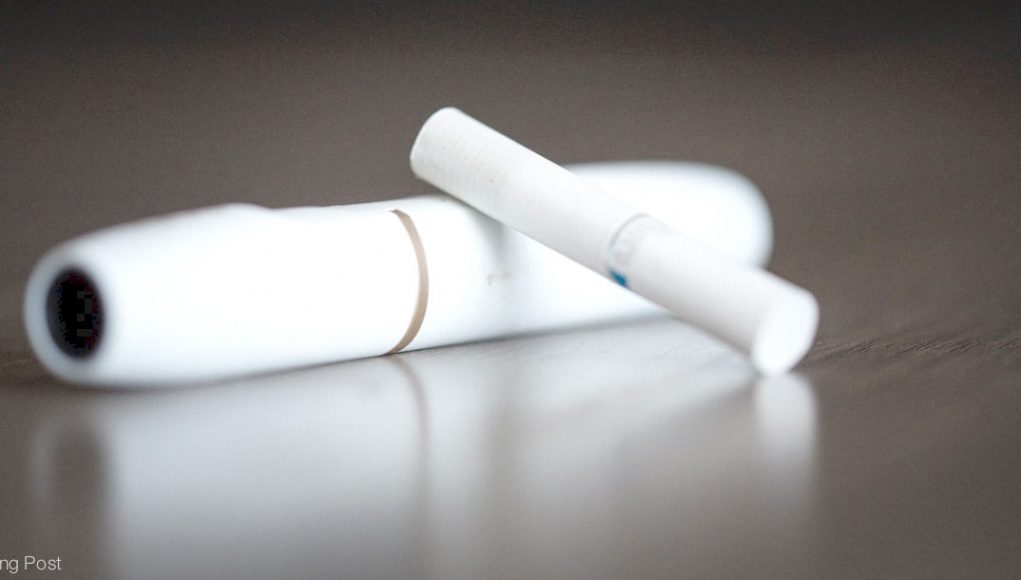The study, “Comparing the Effectiveness, Tolerability, and Acceptability of Heated Tobacco Products and Refillable Electronic Cigarettes for Cigarette Substitution (CEASEFIRE): Randomized Controlled Trial,” consisted of a 12-week randomized trial to compare the effectiveness and product satisfaction between HTPs (IQOS 2.4 Plus) and a refillable vape (JustFog Q16) among participants who had no intention of quitting. The program included motivational counseling.
A total 211 participants took part in the study. Of these, 39.1% HTP users and 30.8% EC users quit successfully. At week 12, the 7-day point prevalence of smoking abstinence values for IQOS-HTP and JustFog-EC were 54.5% (60/110) and 41.1% (44/107), respectively. The research team found that both products elicited a moderately pleasant user experience, and the between-group difference was not significant.
These findings led to the conclusion that switching from cigarettes to HTPs effectively led to a reduction in smoking in people who had no intention of quitting, comparable to the one elicited by switching to vapes. Moreover, user experience and risk perception were found to be similar between the HTPs and ECs.
The popularity of heated tobacco products keeps increasing. Citing data from PML’s first quarter results Head of commercial planning UK & Ireland at PML, Kate O’Dowd recently said that the firm’s HEETS tobacco sticks accounted for more than 6% of the market share of the total industry sales volume for heated tobacco units.
The brand has recently commissioned a survey including 1400 convenience retailers, and over two-thirds of the respondents said they would be willing to forgo competition with other retailers in order to work together in helping their community go smoke-free.
Less addictive than cigarettes
Meanwhile, a 2022 study published in Scientific Reports, compared the addictiveness of heated tobacco product Glo, regular cigarettes, and a nicotine inhaler. Titled, “An abuse liability assessment of the glo tobacco heating product in comparison to combustible cigarettes and nicotine replacement therapy,” aimed to assess the abuse liability of the three nicotine products by following healthy adult smokers in a 5 minute use session in four study periods.
The research team measured product liking, overall intent to use again, urge for product and urge to smoke, and questionnaires were utilised to assess these subjective effects. The collected data indicated that nicotine uptake was greater in cigarettes consumption than in the use of Glo or the nicotine inhaler. Product liking and overall intent to use again was also highest in cigarette use, followed by Glo and then the NRT. Similarly the urge to smoke, was reduced more by the cigarette than by the other products.
In light of these findings the researchers concluded that the liability of abuse of heated tobacco products, in this case Glo, is greater than that of NRTs and lower than that of cigarettes. “These findings suggest that the abuse liability of the THPs lies between that of subjects usual brand cigarettes and the NRT.”
Heated tobacco products have less adverse affects than cigarettes
Titled, “Changes in biomarkers of exposure and biomarkers of potential harm after 360 days in smokers who either continue to smoke, switch to a tobacco heating product or quit smoking,” this non-independent study was conducted by tobacco company British American Tobacco (BAT). It aimed to determine any changes in biomarkers of exposure (BoE) and biomarkers of potential harm (BoPH) after 360 days in smokers who either continue to smoke, switch to a tobacco heating product or quit smoking.
The selected participants were healthy adult smokers divided in three groups, those with a low intent to quit smoking and assigned either to continue smoking or switch to a THP; a group of smokers with a high intention to quit who abstained from tobacco use; and a group of never smokers.
The research team then proceeded to take a number of BoE and BoPH measurements related to oxidative stress, cardiovascular and respiratory diseases and cancer at baseline and up to 360 days. The compiled data indicated that smokers who switched from smoking to using Glo had the same level of decreased biomarkers as those who quit smoking.
Similarly, a recent review covering data from 11 studies and over 2,600 people, found that people who switched from cigarettes to heated tobacco products (HTPs) had lower levels of exposure to harmful chemicals than those who kept on smoking.
The new review followed standard Cochrane methods for screening and data extraction, and the primary outcome measures were abstinence from smoking at the longest follow‐up point available, adverse events, serious adverse events, and changes in smoking prevalence or cigarette sales.
The compiled data from most studies indicated lower exposure to harmful substances linked to cancers, heart disease and respiratory problems, meaning that switching from cigarettes to HTPs may minimize the odds of developing these diseases. However, added the research team, given that the studies were all of short duration, the data is not enough to be sure.
Vaping products remain the safest alternative
Such findings were from first reported in a 2018 study conducted by renowned anti-smoking expert Dr Konstantinos Farsalinos, who had analyzed and compared carbonyl emissions from an HnB device, an e-cigarette and a regular cigarette.
Compared with the tobacco cigarettes, levels for HnB devices were found to be 91.6% lower for formaldehyde, 84.9% lower for acetaldehyde, 90.6% lower for acrolein, 89.0% lower for propionaldehyde and 95.3% lower for crotonaldehyde.
With regards to e-cigarettes, no levels of propionaldehyde and crotonaldehyde, and very low levels of the other carbonyls were detected. When using 5g of e-cigarette liquid, in comparison to 20 cigarettes a 92.2 to 99.8% reduced level of carbonyls was noted. Whilst when comparing 20 heets sticks with the same amount of cigarettes, an 81.7 to 97.9% level of reduced emissions was measured.












